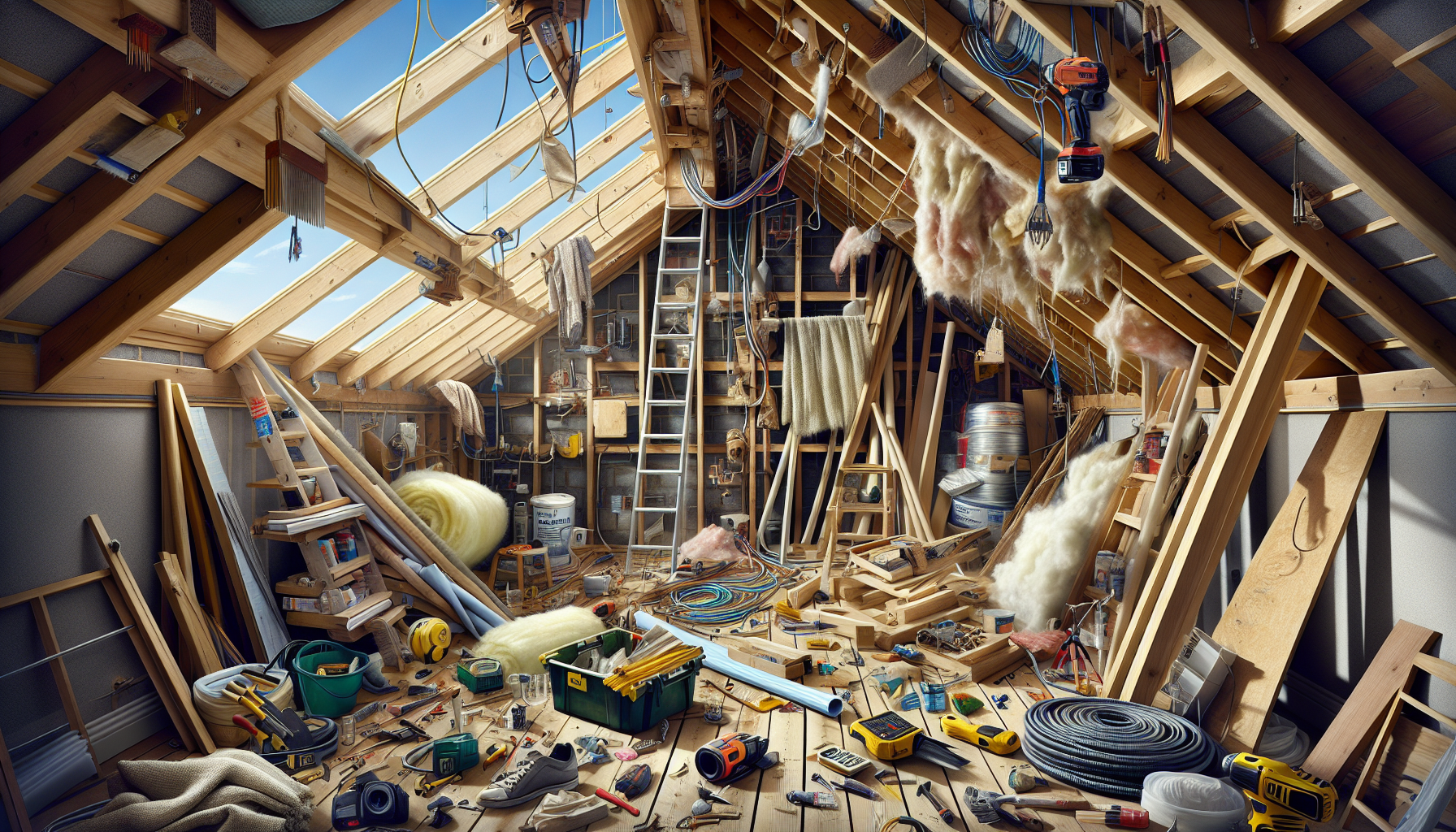
02 Feb The Hidden Costs of Loft Conversions: Factor Everything In
Understand the hidden costs of loft conversions to manage your budget more effectively. Learn about important factors and strategies to plan a successful project.
At Walton-on-Thames, I specialize in creating beautiful and functional loft conversions. If you’re looking to update your kitchen as well, check my Kitchen Refurbishment services. For more advice or a personalized consultation, call me at (+44) 7709 427 111.
Initial Assessment and Planning
The first thing you need to understand about Loft Conversion Cost is that it starts with a thorough initial assessment and planning. This phase includes architectural surveys, feasibility studies, and design consultations. During this stage, potential issues such as structural integrity and planning permissions need identifying. Even if your loft appears straightforward, hidden problems can escalate costs.
For example, older houses often face challenges like outdated wiring or insufficient roof support. Such factors can inflate the overall conversion cost and need addressing right from the start.
Design and Blueprint Costs
Next, you’ll encounter expenses related to designing and drafting blueprints. Hiring an architect or a specialized loft conversion company for design work can vary dramatically in cost. The design phase is crucial for ensuring that the loft aligns with your needs while also adhering to local regulations.
- Architect fees: typically 5-10% of the total project cost.
- Structural engineer assessments: usually an additional 2-5%.
- Planning permissions: fees depend on the complexity and scope of the project.
Don’t overlook these elements, as they are essential for obtaining the required approvals and executing a successful conversion.
Construction and Material Costs
Once the planning and design are in place, the actual construction phase begins, which often takes the largest chunk out of the budget. Key aspects that can influence Loft Conversion Costs include:
- Building materials: high-quality materials are more expensive but offer better longevity.
- Labour costs: depending on your location and the complexity of the work, labour costs can vary significantly.
- Installations: plumbing, electrical work, and insulation all add to the final cost.
It’s vital to account for each element, as skimping on one can lead to issues later on. For instance, inadequate insulation may cause energy efficiency problems, leading to higher utility bills.
Unforeseen Variables
Diving deeper into Loft Conversion Costs, unforeseen variables can catch you by surprise. These often include but are not limited to:
- Unexpected structural issues: like hidden water damage or pest infestations.
- Changes in project scope: additional customization or alterations during the build.
- Regulatory changes: new building codes or local restrictions that could delay progress.
Even weather conditions can impact your timeline and increase costs. Keeping a contingency budget, usually 10-15% of the total estimated cost, can help mitigate these surprises.
Finishing Touches and Interior Design
Post-construction, don’t forget the costs associated with interior design. A finished loft isn’t just about having four walls and a ceiling; it also involves furnishing, painting, and possibly installing specialized features like skylights or bespoke storage. The scope of the interior design can dramatically affect the overall expense.
Investing wisely in high-quality finishes can enhance the aesthetic appeal and functional value of your loft, further justifying the conversion costs in the long term.
Financing Options and Tax Implications
Finally, let’s not overlook the variety of financing options available to manage Loft Conversion Costs. Traditional loans, home equity lines of credit, and specialized renovation loans offer multiple avenues for securing the necessary funds. Some of these may even come with tax benefits, depending on your jurisdiction.
- Consider government incentive programs: these can offset initial costs.
- Look into low-interest home improvement loans.
- Investigate the possibility of tax deductions for energy-efficient upgrades.
Understanding these options can help manage not just the budget but also optimize tax benefits, making the investment more financially sound.
Long-term Value and ROI
While the upfront Loft Conversion Cost might seem significant, it’s important to look at the long-term value. A well-executed loft conversion can significantly boost your home’s value, offering excellent returns on investment. Real estate data often shows that homes with additional living spaces sell for higher prices.
Additionally, a loft conversion provides immediate benefits like increased living space, which can be utilized in numerous ways, from extra bedrooms to home offices, thereby enhancing your quality of life.
If you’re curious about extending further, read the article on Essential Strategies for Perfect Double-Story House Extensions to explore more options for maximizing your property’s potential.

No Comments